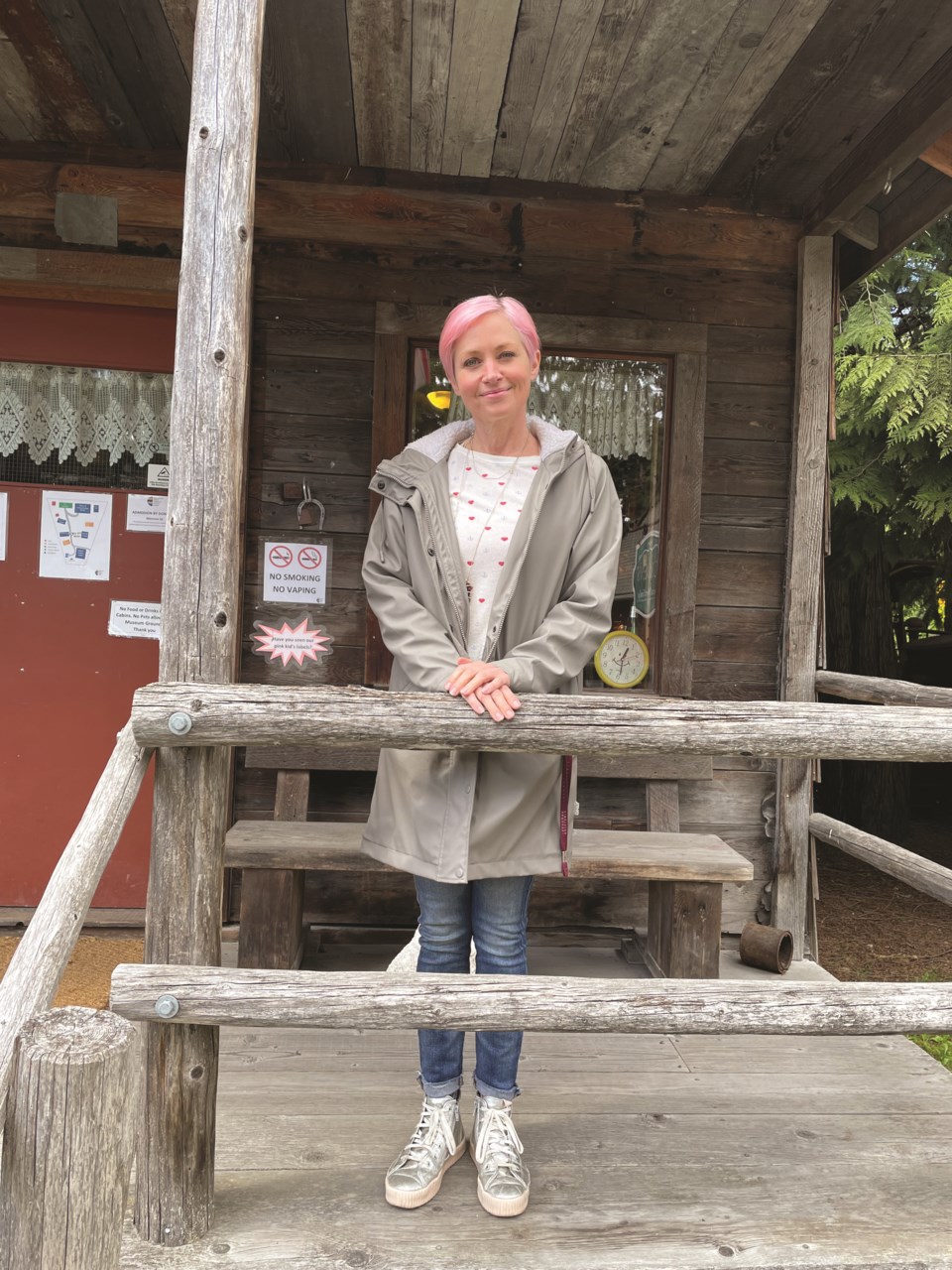Between 2016 and 2021, Pemberton’s population grew by almost a third, with waves of young families and Sea to Sky transplants choosing to settle down in the rural community.
Such a demographic shift of course comes with a number of knock-on effects, be they social, cultural or economic. And for an organization like the Pemberton and District Museum and Archives Society, dedicated to preserving and promoting the region’s rich and varied history, it makes the work the team there does all the more essential.
“Pemberton is clearly growing and it’s not just people with a long history here, but there are a lot of new people moving into the community, so we want to get them to actually engage with the neighbourhood and the spaces around them and find ways to bring them out,” says the museum’s new curator, Charmaine Carpenter.
Carpenter is primed to find new ways for the museum to engage the public. Coming from an arts and culture background, Carpenter was an Arts Whistler staffer between 2018 and ’20, programming the organization’s slate of street entertainment and curating such shows at the Maury Young Arts Centre gallery as Levi Nelson’s debut exhibit as well a show dedicated entirely to the art of tattooing. She also previously served as a team lead in the early years of the Vancouver Mural Festival and worked as the programming and marketing manager for the Mount Pleasant BIA in Vancouver, one of the city’s oldest neighbourhoods.
“I have a background working in historical places, telling stories about the places and knowing the people and everything that makes a community,” Carpenter says. “So when this opportunity came up, I jumped at it. It’s a really great fit and so far, so good.”
Carpenter acknowledged she has some pretty big shoes to fill after the departure of curator Niki Madigan, who recently left the museum after 14 years.
“She completed some incredible work, especially in the last few years with the capital projects they completed. So there are two new buildings on the site,” Carpenter explains. “She’s a very successful grant writer and she was able to modernize the museum. Obviously it’s an old place full of old things and it started as a passion project for people that live here, and she took it into the future.
“She created a playground and a space to fill, and hopefully I’ll be able to do that.”
These days, the museum counts three modern and five historic buildings in its footprint, including the Pemberton Station School and Arn Cabin, gifted by the school board in 2013 and restored in recent years. Those sites should be ready to host exhibitions and touring school groups by the fall.
Carpenter says another of the museum’s buildings is in the process of possible repatriation to the Lil’wat Nation, part of an ongoing effort over the past few years to get back cultural items and artifacts that originally belonged to the Lil’wat as well as Squamish Nation. In 2019, for instance, several objects, including stone pieces and baskets, were returned to the Lil’wat, the culmination of a project that saw museum staff collaborate with a summer Lil’wat student, Johnny Jones of the Lil’wat Lands and Resources office, and Alison Pascal from the Squamish Lil’wat Cultural Centre.
“Obviously [the Lil’wat] have a lot of things on their plate, but we’re here to support the community any way we can and setting the tone for how they would like to handle certain things, like objects we might have that would historically be theirs,” Carpenter says.
“I’m so grateful to be part of an organization that sees their place in all of this and understands the history of Pemberton doesn’t start with the gold rush, but in fact started thousands of years before that. A lot of the young staff are coming from the Nation and they’re learning, I think, about themselves and then also about their place in the greater area.”
Carpenter is also keen to build on the many relationships Madigan forged in her time here, and wants to grow the museum’s technological capabilities to expand the ways in which guests interact with the museum and Pemberton’s long history.
“I hope to build on the relationships [Madigan created] and see the future of the museum moving forward, including technology and events that people want to come to and try to populate and get people in here and understand the stories of the place they now live,” she adds.
Learn more at pembertonmuseum.org.




